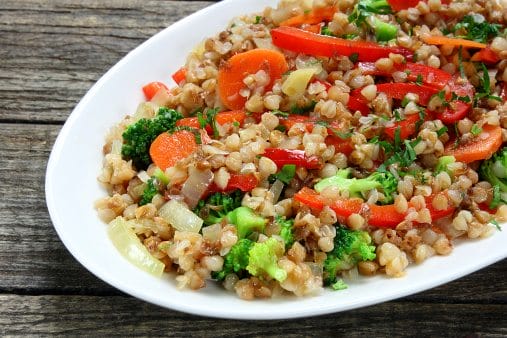 Thinkstock
Thinkstock Regular consumption of whole grains can lower the risk of heart disease, stroke, Type 2 diabetes and certain cancers. They also play a role in weight management and gastrointestinal health.
Gluten-free whole grains that you’ll want to consider include amaranth, buckwheat, corn, millet, (pure, uncontaminated, gluten-free) oats, quinoa, rice (black, brown, red, wild), sorghum and teff.
How to Cook Whole Grains
Bring liquid (water or gluten-free broth) to a boil and then simmer for suggested cooking time (see below). Generally speaking, the grain is done when tender. If not tender, add more water and continue cooking; if done before all the liquid has been absorbed, simply drain the excess.
You can also buy whole grain side dishes such as brown or wild rice that have been pre-cooked and only need to be warmed in the microwave or cooked briefly. Cooled leftover grains can be stored in the refrigerator for up to five days or frozen for two to three months.
| Grain (1 cup raw) | Water (cups) | Cooking Time (minutes) |
|---|---|---|
| Amaranth | 2 | 20-25 |
| Brown Rice | 2 1/2 | 30-45 |
| Buckwheat (whole groats) | 2 | 15-20 |
| Millet | 3 1/2-4 | 25-35 |
| Oats (rolled) | 2 | 15-20 |
| Oats (quick cooking) | 2 | 5-10 |
| Oats (steel cut) | 2 | 10-20 |
| Quinoa | 2 | 15-20 |
| Sorghum (soak overnight) | 2 | 45-60 |
| Teff | 3 | 20 |
| Wild Rice | 4 | 40 |
See also:
Recipe: Chickpea Burgers with Buckwheat Tabbouleh Salad
How to Get Enough Whole Grains on the Gluten-Free Diet
Shelley Case is a consulting dietitian and author of Gluten-Free: The Definitive Resource Guide. She is on the advisory boards of the Canadian Celiac Association, the Celiac Disease Foundation and Gluten Intolerance Group.





